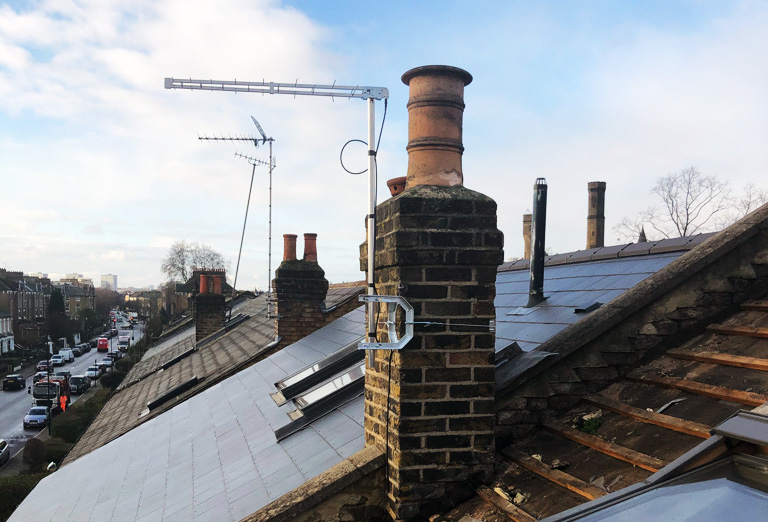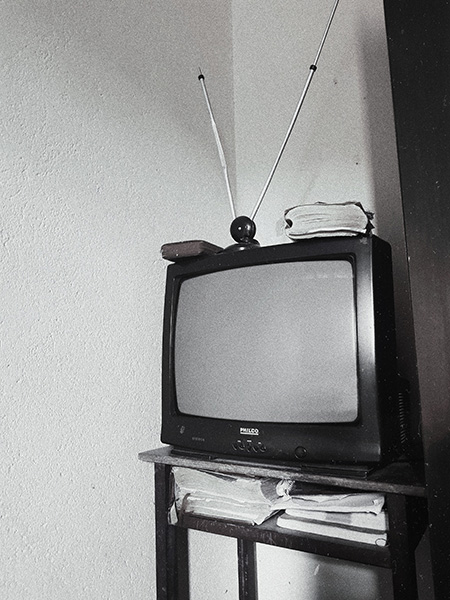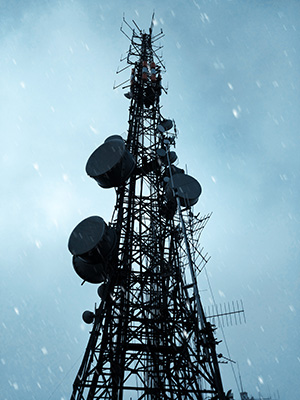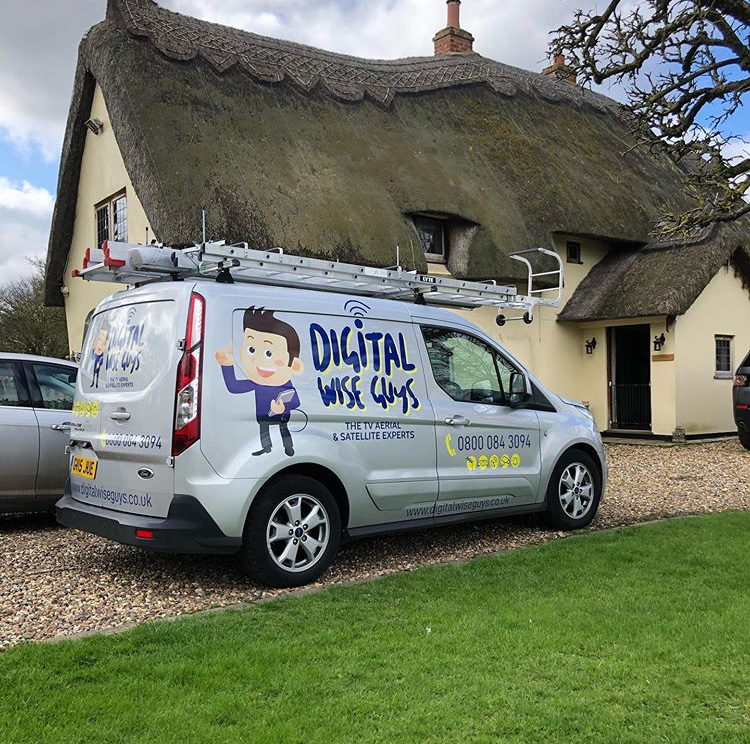Thinking of getting a TV aerial installed? Need to know more about them, like how much they cost, what are the different types? Have you moved into a new property without an aerial? Or are you having signal problems and need some advice? You’ll find the answers to these and many more questions below…
Who is this TV Aerial guide for?
- Anyone who’s just curious about what types of TV aerials are available and would like to know more
- If you’re looking to get a TV aerial installation done and need more knowledge before choosing a company
- If you’re having TV signal problems and would like some advice on what to look out for
- Or if you’re wondering whether you can install a TV aerial yourself.
Guide contents:
- Introduction
- A short history of TV aerials
- What is a TV aerial?
- Types of TV aerial
- Do I really need a TV aerial?
- Signal issues and how to fix them
- How much do they cost?
- Can I install a TV aerial myself?
- TV aerial repairs, maintenance or replacements
- Conclusion
An Introduction to the exciting world of TV Aerials

First, let’s get something out of the way before we continue. This guide is very much UK-centric. That means we’ll only be discussing how TV aerials are used within the United Kingdom and what you can watch with them here. Of course, the technology is basically the same wherever you are. So if you’re not in the UK by all means please do read on. It’s just important to note that every country works a bit differently on what TV signals are delivered. If you’re seeking a TV aerial installer it’s always best to speak to a local installer if you have any questions. Okay, now that’s out of the way let’s dig in.
So, although many people have upgraded to satellite dishes, TV aerials are still widely used in the UK and offer a free option for watching popular TV shows. According to Freeview – the company managing the free TV platform in the UK – 18 million households watch TV over a TV aerial!
A short history of the TV Aerial
The first experiments using antennas that were eventually used to transmit TV signals date back to the 1830s. It was the German physicist, Henry Hertz, who was the first to prove that electromagnetic waves can pass between a transmitter and a receiver. But before him, it was a Scottish mathematical physicist, James Clerk Maxwell, who proposed the theory that Hertz based his work on. The eventual technology we use today also wouldn’t have been possible without the work of Guglielmo Marconi. He was an Italian inventor and electrical engineer who pioneered long-range radio transmissions.

Fast forward a half-century and it wasn’t until the 1950s that strange-looking TV aerials started appearing on rooftops throughout the UK. Back then there were only a couple of channels and it stayed like that for a long time! Nowadays of course we’re used to more channels than you can shake a stick at. Again from Wikipedia: “As of July 2020, [Freeview] had some 85 TV channels, 26 digital radio channels, 10 HD channels, six text services, 11 streamed channels, and one interactive channel.”
The Switch to Digital Television
In the early 2000s, it was proposed that the TV signal in the UK should be switched from analogue to digital. The main reason for the move was to keep up with satellite and cable technology and provide viewers with more options. The move also benefited mobile phone operators by freeing up space in the TV’s frequency range. The switchover finally happened at the end of 2012 (but only after lots of experiments, a huge national campaign and extensive support for consumers).
Who is behind Freeview?
According to Wikipedia (thanks!) Freeview “is operated by DTV Services Ltd, a joint venture between the BBC, ITV, Channel 4, Sky and transmitter operator Arqiva.” It actually took over from ITV Digital which collapsed but since then it’s gone from strength to strength.

What is a TV aerial?
A TV aerial, or television antenna, is a device usually consisting of evenly spaced metal rods specially designed for use with a TV receiver to receive over-the-air signals broadcasted by TV stations. As we mentioned earlier, those signals started changing from analogue to digital around 2002, although because the same frequencies were used, most of the existing TV aerials in the UK were still fine for use with the new digital signals. The only requirement for viewing digital was to use a new type of tuner and that’s where Freeview came in with their set-top box technology which was quickly included within most new TVs sold around that time and since.
Like any antenna, a TV aerial is made of metal. Electromagnetic waves carrying television signals induce tiny electrical currents in the antenna. The television set then amplifies the signal then selects the information that carries vision and sound. TV Aerial Engineers refer to some TV aerials as ‘yagi arrays’. The metal plate at the array’s far end reflects the signal back down its length. The parallel rod-like structures that run along the length of the aerial are specially spaced to optimise signal strength.
Need more science?

Okay, here goes (courtesy of Wikipedia): “The purpose of the antenna is to intercept radio waves (which travel at the speed of light – which is 300 million meters per second!) from the desired television stations and convert them to tiny radio frequency alternating currents which are applied to the television’s tuner, which extracts the television signal. The antenna is connected to the television with a specialized cable designed to carry radio current, called transmission line.”
Are you still awake? You couldn’t be blamed for nodding off there… it’s safe to say that only the really die-hard geeks would be interested in how antennas work. For most of us, we’re just content to know that they do work and all we care about is getting a decent quality signal so we can watch our favorite shows in peace! Signal quality is an issue though and we’ll get into that a little further down in this guide.
Types of TV Aerial
TV aerials fall into three main categories: indoor, loft or outdoor. The main differences between the three categories are size, gain and where they’ll be located – and it’s the size of the aerial that denotes how good a signal you’ll be able to get. So size really does matter when it comes to TV aerials!!
Indoor TV Aerials
Indoor aerials usually work quite well if your property is in a built-up, inner-city or urban area within a strong radiation “footprint” of local transmitters (more on those below). They don’t work so well if you’re on the outskirts of towns or in the countryside. In those cases, you really will need a larger outdoor aerial that can pick up signals from much further away.

These types of aerials come in many different styles and designs: from the traditional ‘rabbit ear’ variety to the more modern flat version (which is essentially just a loop antenna covered in conductive plastic). Heck, sometimes even an upside down wire coat hanger has been known to work although we don’t recommend that!
While these are fairly easy to set up and use they can become annoying to keep next to your TV (especially if you have small children or feisty pets at home). Many people prefer the increased reliability that you can only really get from a larger, outdoor aerial.
In-loft TV Aerials
TV aerials installed in your loft or attic space are a good solution if you’re able to get a medium to strong TV signal. Since there’s no need to scale a roof to install these types of aerial it’s possible, if you’re handy at DIY, it’s possible to have a go at installing one yourself without too much trouble. You will need a kit to do that but those are pretty easy to find and purchase online. Another bonus is that the aerial is kept out of sight which appeals to many people.
Outdoor TV Aerials
When more reliable reception is required it’s time to turn to the trusty outdoor aerial (also called a directional antenna or UHF television antenna). We won’t be getting into the design or history of outdoor TV aerials, suffice to say they get the job done, are really reliable and we have a soft spot for them since we install them most days of the week!
If you’re interested in knowing whether you can install an outdoor aerial yourself then we’ll get into that a bit later down this page.
Does the directions of the aerial matter?
Yes, in most cases the aerial will need to be pointed towards the nearest transmitter. If you’re not an expert installer this will mean a bit of trial and error to get it right. The Freeview website actually has a very handy search function where you can input your postcode and house number to find out where the nearest transmitters are located. So if you’re installing one yourself and are a fairly good map reader (or still remember how you got your Orienteer badge in scouts) then you should be able to tell roughly where to point the aerial.

For example, if you’re in London then Crystal Palace is going to be the nearest transmitter. It even reaches as far as the “Home Counties”. The website even gives you a ‘Coverage prediction’ which “gives a multiplex-by-multiplex view of the transmission channel and reception prediction for each transmitter that is expected to provide a usable signal”. Be warned though! These are just predictions and as such are not always accurate. It doesn’t always mean you will be able to get the reception desired.
So, here’s the link so you can have some fun with that! Freeview Transmitter Information
Do I really need a TV aerial?

If you’d like to enjoy access to free TV channels then the simple answer is yes! Freeview through an aerial is a decent option if you’re not fussed with having a million channels you might never watch. And if you are happy with the content you get from the main UK channels from the BBC, ITV and Channel Four etc. Obviously, there are tons more channels than that, just check out this guide if you’d like to find out how many. And of course, it’s Free! Did we say that already? Seriously though, Freeview is a perfectly good solution to the most ardent TV fanatic! You still have access to a massive amount of brand new TV shows and all without the need to spend money on monthly subscriptions.
Signal issues and how to fix them
If you’ve read about the different types of aerials in the previous sections then you’ve probably already got a pretty good idea of why you might be having signal problems. The most likely cause of problems is your location (how far your home is from the nearest transmitter) coupled with the type of aerial you have. A small indoor aerial just isn’t going to cut it if you live outside a town or city. Even if you’ve got an outdoor aerial installed on your roof you could still have problems. For instance, if you live next to tall structures, live in a deep valley or there are hills between your property and a transmitter then you could experience poor reception.

The connection to the aerial might also be worn or damaged. Other possible causes might include interference from trees, the materials used on your roof, signal attenuation due to thick walls and even the junk you keep in your loft!
Like ourselves, many aerial installation companies will offer you a free site survey if you think you need new equipment. Therefore it’s often easier to leave it to the professionals rather than spending hours trying to figure out exactly what’s wrong. We’ve turned up to many jobs and found the right solution within minutes because we know what to look for.
How much do TV Aerials cost?
Basic indoor TV aerials cost from around £10 and prices go up to around £90 for a top-of-the-range model.
Outdoor TV aerials cost from around £40-£50 although those prices don’t include the cables or poles to mount the aerial to. Prices for those items will vary depending on the supplier or installer you speak to although it is fairly easy to find cable and connector kits on places like Amazon.
Would you like a quote to install your outdoor aerial? We offer a free, no-obligation, site survey so that we can go through all your requirements and decide on the best spot for your shiny new aerial (or satellite dish). Go here to enter your contact details and we’ll call you back.
Can I install a TV Aerial myself?
The simple answer is yes! It should be possible for most able-bodied people to install an indoor TV aerial if you’re confident that it will work in your location – if you live in a big city or within 20 miles of a transmitter then you should be okay.
If you’re handy with a little bit of DIY (can drill screws and firmly attach things) AND you have safe access to your loft space or attic then you should be able to fit an aerial yourself without too much fuss. It’s important to remember that loft spaces that haven’t been boarded can be dangerous places to work. Falling through the ceiling is a common occurrence and can leave you with life-threatening injuries so it’s really important to be careful. And if in doubt get a professional to do the work.
If you’d like to know more about how to install a TV aerial in your loft space, we found a really detailed guide here that you’ll surely find useful. There are a number of affiliate product links but we think the information here is pretty solid: Loft TV Aerial Installation Guide.

So what about installing an outdoor aerial myself?
Installing an outdoor aerial is not something we’d recommend doing unless you have specific experience working on rooftops as part of your work. Even so, there are specific things you would need to check for and do whilst at height which makes this a pretty dangerous exercise! Our installers are well used to working on rooftops in all weathers and they are also specialists at doing ‘At-height Installations’ (think large or tall properties/blocks of flats). We also use a set of tools and gadgets that enable us to get the best possible signal or position every time.
If you’re adamant that you can install an outdoor TV aerial yourself or you’d like to try and fix a poor reception issue please think long and hard before you attempt it. Is it worth dying for when you can get a professional to sort it out, often within 24 hours? There’s even been at least one high-profile celebrity who died doing just that so you’ve been warned, leave it to the experts!
TV Aerial repairs, maintenance or replacements
We often get called out by customers whose aerial is loose and is moving around causing unwanted noise and signal problems. Or they are rubbing against another part of the building or where the connections to the aerial have become degraded. And although outdoor aerials are waterproof, they won’t last forever so at some point you might need a replacement if you want to continue watching TV.
Another common type of work we do involves replacing huge aerial rigs for smaller ones because the technology and design has improved meaning it’s often not necessary to have your aerial on a really long pole. These old rigs can even be so heavy that they start putting a strain on the chimney or part of the building they are attached to.
When it’s the right time to get the drone out!
Yep, you guessed it. As well as being super handy aerial installers (we also do satellite dishes, TV wall mounting and CCTV) we’re also complete drone nerds! No seriously, sometimes, rather than scaling a ladder to investigate a problem, it makes more sense to whip out the drone and get it up there to have a look. It’s a valid excuse to use it, we promise you!
Do I need an aerial for every TV in my house?
No you don’t. Simple as that. We’ve come across some companies that will try and convince you to put up multiple aerials around the outside of your home, one for each TV in the house. If this happens to you, give them the boot! There’s no good reason to need more than one well installed aerial on your home.
Conclusion

Getting a decent quality signal for your TV watching pleasure is really important. No one wants to have to put up with frozen pictures, ghosting or other types of interference caused by crappy equipment. Therefore getting hold of a decent quality TV aerial – whether that’s one you install yourself if you live in a city or one you need to have installed by professionals like ourselves – is going to make all the difference.
For people who live on their own, those with certain disabilities or for families with small children, having a working TV signal can dramatically improve quality of life. Therefore it’s vital to get the right equipment installed.
If you have any questions about a TV aerial installation please get in touch and we’d be happy to help.



